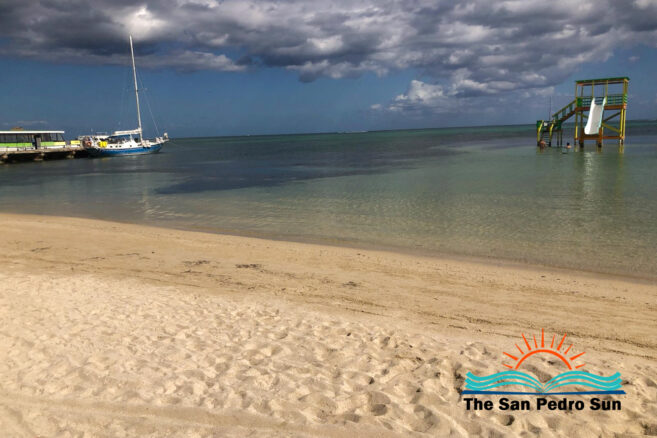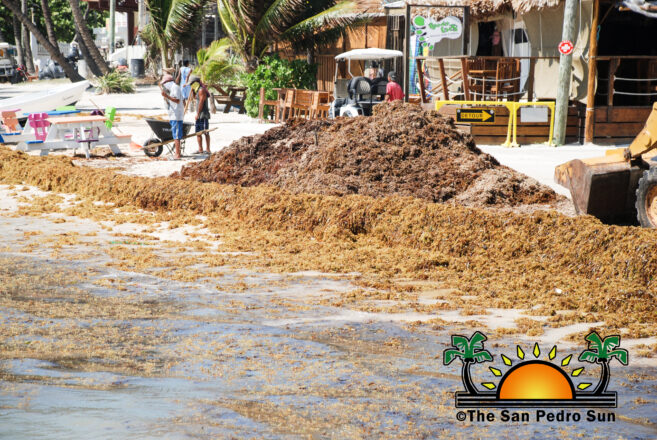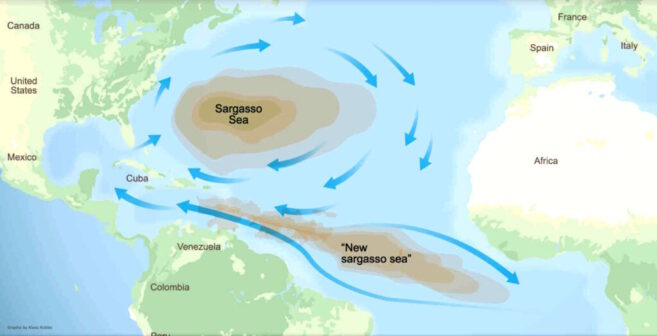The eyesore of sargassum mats littering our beaches has not been observed in San Pedro, Ambergris Caye, for months. This has led to clear and clean coastlines with beautiful sandy beaches. However, as Easter approaches, the threat of sargassum looms, and according to reports, there could be heavy seaweed invasion.
A recent report by the University of South Florida, USA, monitoring the natural phenomenon indicates that there will be an increase in the abundance and distribution of sargassum in the first months of 2024. According to their latest report, roughly 5.5 million metric tons of brown algae were detected in the central Atlantic Ocean in January, slightly higher than in December 2023. The report also stated that the long-term extent of the bloom remains uncertain at this time. The monitoring efforts have noticed a sargassum patch in the Caribbean Sea drifting in an eastern motion. This mass is expected to hit the beaches of several island nations, the Mexican coast of Quintana Roo, and eventually the Belizean coastline. Weather conditions are currently holding back this large concentration. Researchers say that the sargassum seaweed growth is expected to continue over the next few months as the main bloom in the Atlantic Ocean expands. They say it will eventually start drifting to the west of the Caribbean region.
Weather conditions are currently holding back this large concentration. Researchers say that the sargassum seaweed growth is expected to continue over the next few months as the main bloom in the Atlantic Ocean expands. They say it will eventually start drifting to the west of the Caribbean region.
Is sargassum dangerous?
When this seaweed reaches the beaches, it forms compact mats that suffocate fauna, flora, and coral. As it decomposes, sargassum releases toxic gases, such as hydrogen sulphide and ammonia, both pollutants to the air and water. These gasses are also known to cause respiratory problems in people. Beachgoers who come in contact with the algae may develop skin reactions like rashes and blisters if touched without protection, like gloves. This seasonal seaweed invasion contributes to significant economic consequences for the tourism industry in the Caribbean region.
Sargassum persistence
The presence of sargassum is the result of several factors. The central Sargasso Sea, located in a warm zone year-round north of the Atlantic Ocean, is regularly fed by nutrients from South America’s Amazon and Orinoco rivers and the African Congo. This provides an environment conducive to its continuous development. The Sahara dust and other elements also promote its growth. A massive second sargasso patch is also developing just north of South America and drifting west into the Caribbean Sea.
Researchers have indicated that the issue has been increasingly problematic since 2010. The reports say that before 2010, sargassum developed in the initial Sargassum Sea followed a seasonal cycle, with slow growth in winter and expansion during warm periods. However, in 2010, an exceptional event occurred, involving larger mats escaping from the initial sea and getting trapped in a calm area called by sailors “the doldrums” or the “Intertropical Convergence Zone,” providing the seaweed favorable conditions for its growth. These conditions continue to provide an adequate environment for the continuous development of sargassum throughout the year.
On Ambergris Caye, where tourism is the primary industry, authorities have been discussing the soon arrival of the Sargassum seaweed. Some hoteliers have opted to build seawalls, while environmental organizations like the Hol Chan Marine Reserve plan to acquire harvester machines to collect the brown algae before it beaches on the coastline. The local government also called on the island residents that the environmental issue is affecting everyone and will take a collective effort to overcome the threats of Sargassum season this year.

Share
Read more

